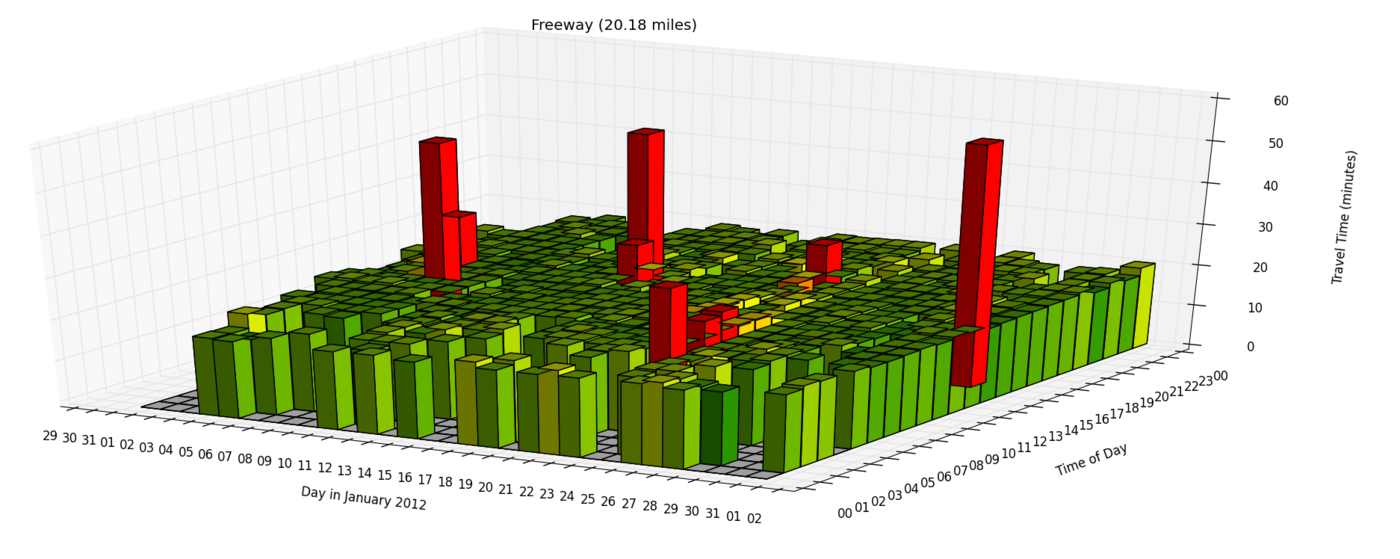Travel Time Reliability Reference Manual/Calculating Speeds and Travel Times
Calculating speeds or travel times along a corridor is straightforward given that one has constructed the TMC segments which make up the corridor and that one has a tool by which to access the data. One open source tool for writing the necessary code is Python. Python extensions, such as Psycopg, allow one to access SQL databases which are storing the speed/travel time data.
INRIX and NPMRDS provide either speed or travel time measurements for each TMC for every time interval (1 or 5 minutes). TMC lengths are also reported which allows for easy conversion between speed and travel time. Calculating speeds or travel times along a corridor only requires that these values be aggregated. Python scripting can be used to read from the databases for the necessary TMC segments and desired time periods and loop over the values in order to construct speeds/travel times. These speeds/travel times can then be written to a Comma Value Separated (CSV) file, or inserted into a database table.
Additional add-ons are available for Python which allow 3D graphing capabilities. Below are sample graphs created using the NPMRDS data set and the Matplotlib python library. Blank areas represent points where real-time data did not exist along the entire corridor.
Travel Times for 4-lane Inter-regional Freeway in January 2012
Travel Times for 6-lane Urban Freeway in January 2012

